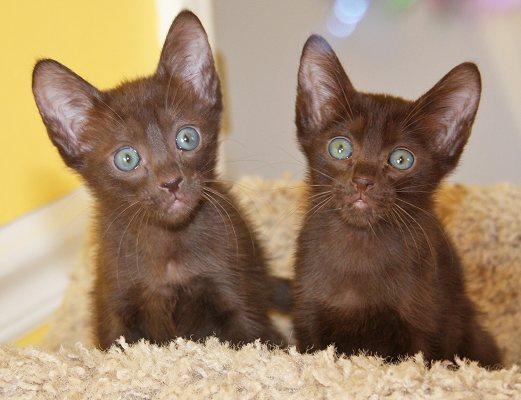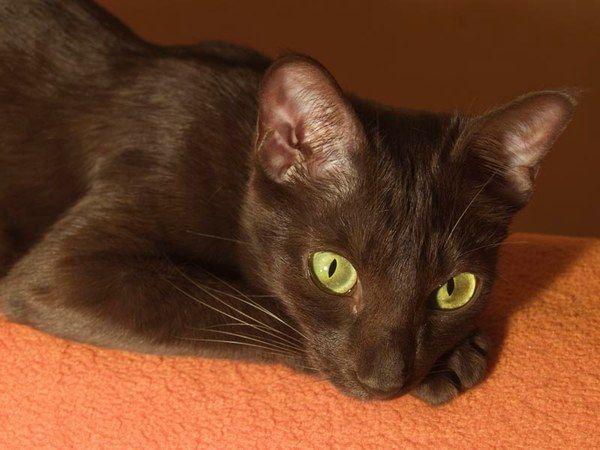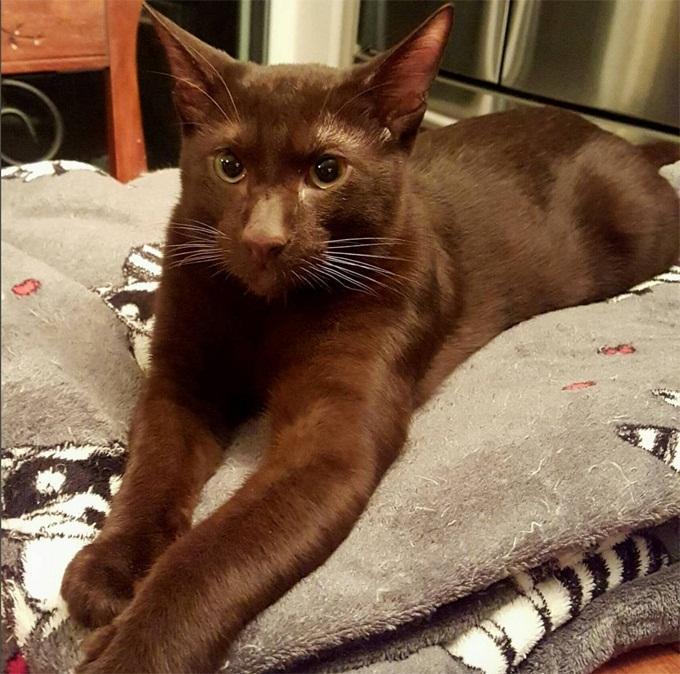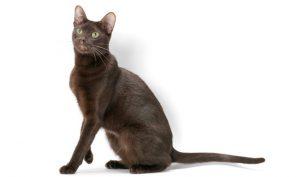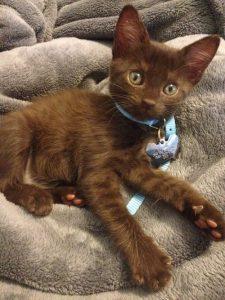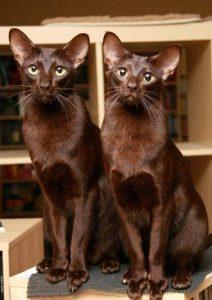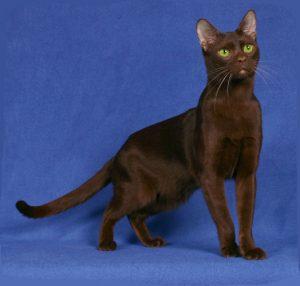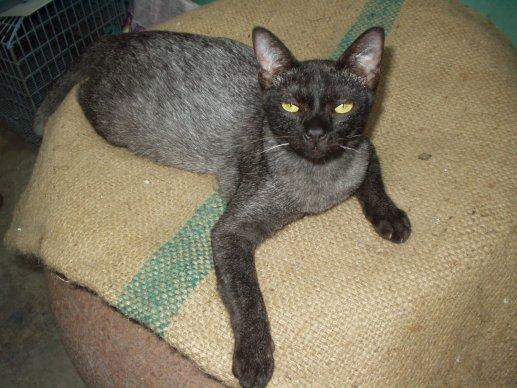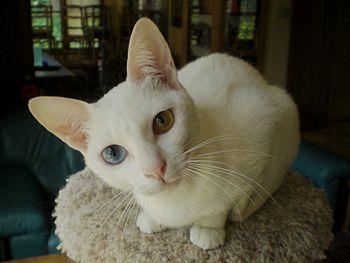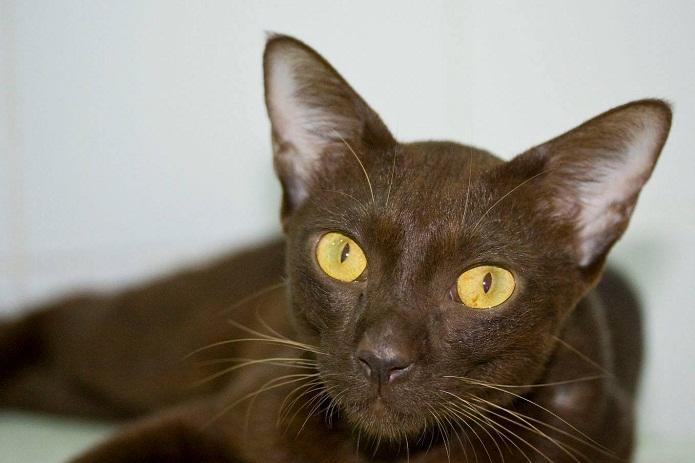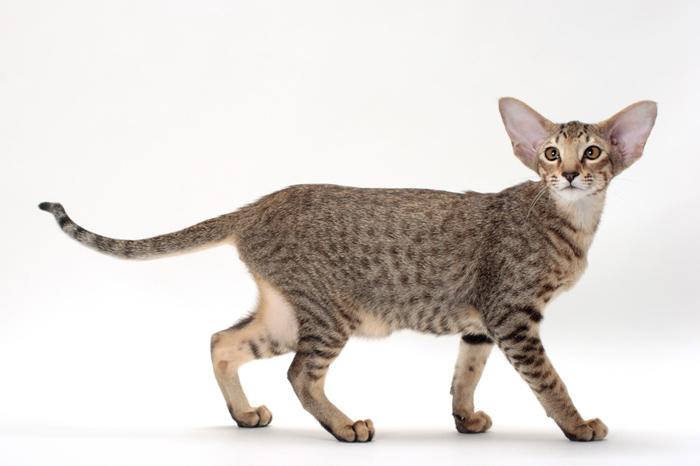The Havana Brown Cat is a breed of solid chocolate-colored cats that are exceedingly rare with an ‘endangered’ existence. Interestingly, the Havana Brown in the UK is a brown variety of the Oriental Shorthair, but the Havana Brown in the US is a different breed, characterized by a different body and head type. Breeding programs have been implemented throughout the west to prevent the breed from disappearing altogether.
Quick Information
Physical Appearance & Size
| Size Category: | Medium |
| Body Type: | Well-muscled, compact stature with erect, forward-tilted ears, square chin, ‘corn-cob’ shaped muzzle, full whisker pads Broad, rounded chest, and slender legs with a smoothly rounded head bearing no flattened areas |
| Weight: | Male: 8-10 pounds; Female: 6-8 pounds |
| Height: | Medium |
Colors & Patterns
| Coat Type: | Short, glossy, straight |
| Colors/Patterns: | Technically, this breed comes in two colors, ‘rich mahogany red-brown’ and ‘pinkish grey’/‘lilac’ (TICA) |
| Tail Type: | Long, straight |
| Eye Color: | Bluish to greenish blue |
Other Characteristics
| Other Names: | Havana |
| Life Expectancy (Lifespan): | 8-13 years |
| Characteristics/ Qualities: | Loving, intelligent, social, playful, interactive, curious |
| Lap Cat: | Yes |
| Shedding: | Minimal |
| Good with Children: | Yes |
| Good with Pets (Other Cats): | Yes |
| Vocalization/ Noises: | Minimal |
| Hypoallergenic: | No |
| Attention Seeker: | Yes |
| Countries of Origin: | England, Thailand |
| Availability: | Extremely rare |
History and Development
The origin and development of the Havana Brown breed are somewhat shrouded in mystery and debate. Experts opine that this breed is a result of a purposeful breeding program by crossing the chocolate- and seal-point Siamese cats with black domestic shorthairs and Russian Blue cats. The primary purpose of such a breeding was to develop a solid chocolate brown breed with emerald eyes. Though, some cat researchers also presume that this cat was developed as a result of accidental breeding.
Such debates initially sprang up from a chocolate brown kitten that was born in England back in 1952. This baby cat is considered to be the very first ‘Havana Brown’ cat. Later, in 1953, four more male chocolate kittens were born in a litter that served as the very basis of this new breed.
With a confusion arising from the breed’s name, an attempt was taken to change the name to ‘Chestnut Foreign Shorthair Cat’. However, this proposition did not prove to be much effective, and the name of the breed reverted to the original. Since then, several cat registries registered the breed but in slight variations like simply the ‘Havana’ in Europe, as well as in another US cat registry.
It was in the mid-1950s that the first Havana Brown was imported into North America. In 1959, the Cat Fanciers Association accepted its registration and was granted the ‘Championship’ status in 1964.
In today’s situation of its population crisis, the cat registries might need to redefine the breed standards and allow crossbreeding. Such initiatives, however, might bring in dramatic changes to both the appearance as well as the demeanor of the Havana Brown breed.
Temperament and Personality
- Active and playful by nature and loves spending time with interactive toys
- Human-oriented cat that loves to be around people, or play and stay involved with them
- Not very vocal
- Tends to get very close to its one favorite person and attaches itself to him for life
- Ruled by curiosity and often uses its paws to investigate things and demand attention
- Gets a bit of a loner at times
Who is the Highlander Cat Good For
- Those who are ready to spend time almost the whole day with their pet cats
- People who do not mind their cat following them from room to room
- Individuals who love to play games with their pets
- Those who enjoy the attention of one-man pets
Care
Since these cats do not shed much, they seldom need grooming. Brush them weekly with a soft-bristle brush so as to retain the rich chocolaty sheen of the coat. But remember to trim their nails and clean their ears from time to time.
They are usually a healthy breed except that there have been some reports of this breed developing calcium oxylate stones in the urinary tract.
Are they Easy to Train
These are highly intelligent felines and would take no time to pick up lessons and training. Additionally, supply them with interactive toys and reward them with treats like kibbles or snacks as and when they learn to manipulate your tricks.
Diet/Feeding
General feline diet schedule consisting of high-quality dry kibbles is recommended.
Interesting Facts
- The name of the very first Havana Brown cat was ‘Elmtower Bronze Idol’.
- Like many people mistake, this breed did not develop in Havana, Cuba. The term ‘Havana’ actually refers to the rich brown color of the Havana cigars.
- Presently, fewer than 1,000 Havana Browns are left in the world.

